Visiting the Vasa Museum in Stockholm is something you have to do at some point! The Vasa ship carries a lot of Swedish history and it is unique that such an old wooden ship has been salvaged and restored. We've both been here before, but it's been a long time, so it was time to visit the Vasa Museum again.
Table of contents
Visiting the Vasa Museum
We decided to visit the Vasa Museum on Friday. Sometimes when we have time to spare, we take the opportunity to visit one of Stockholm's museums. On Friday, we actually had a full day with the three museums. We'll let you know about the others!
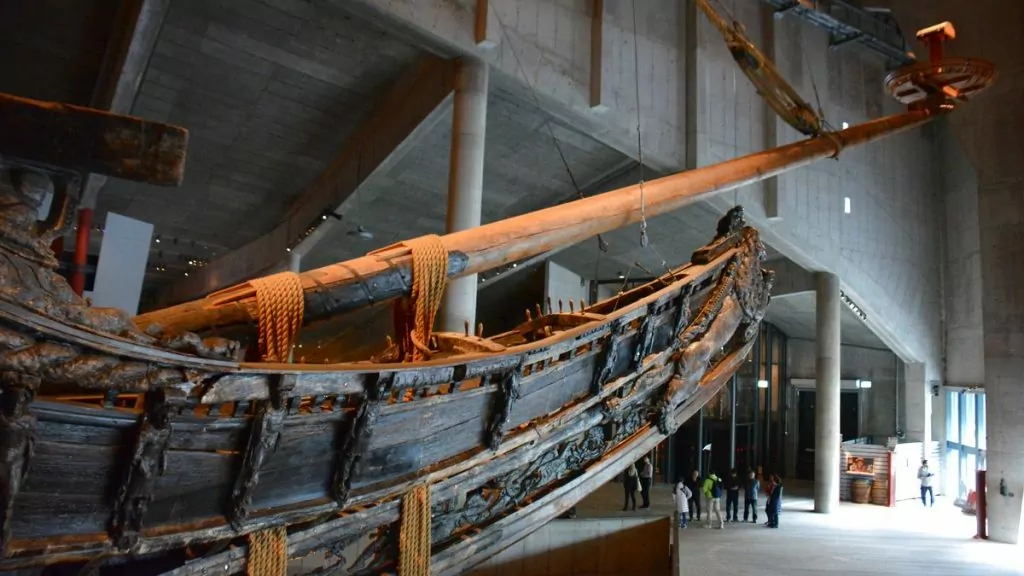
A fascinating history at the Vasa Museum
The story of the regal ship Vasa is one of those fascinating tales that you never really get tired of. I (Helena) had a children's book about the Vasa when I was growing up that I read many times. When we decided to visit the Vasa Museum, our interest was rekindled.
It all started when Gustav II Adolf signed a contract in 1625 with Dutch master shipbuilder Henrik Hybertsson and his business partner Arendt de Groothe. The shipbuilders were to build four ships, of which Vasa was to be the most fearsome warship the world had ever seen.
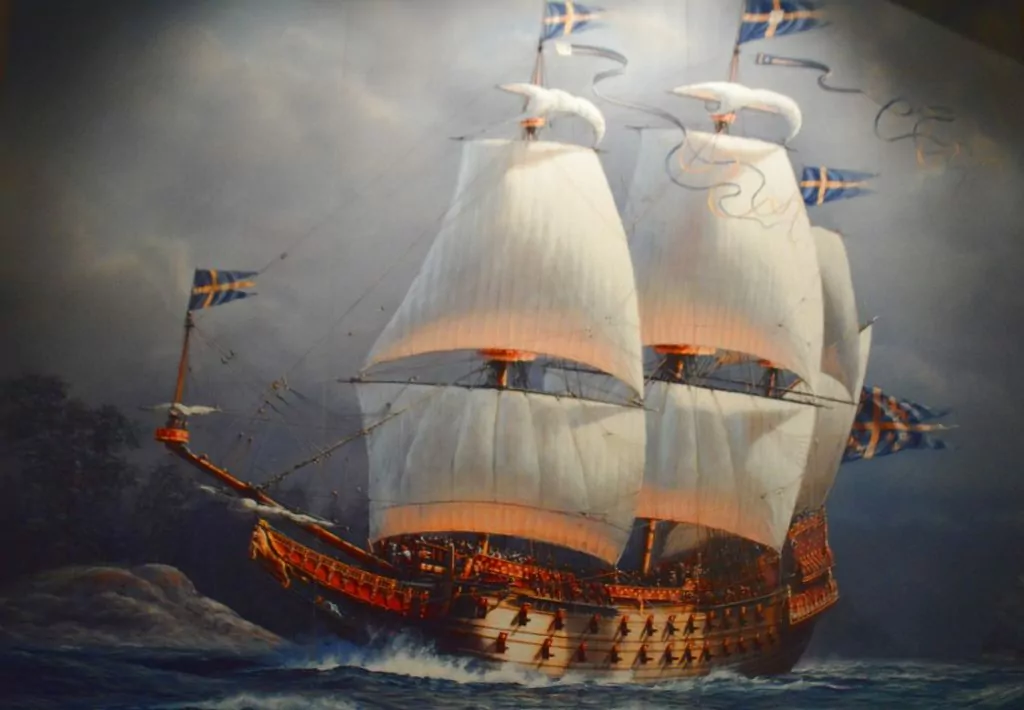
Master shipbuilder Henrik Hybertsson dies
Construction took place at Skeppsgården in Stockholm, but Henrik Hybertsson fell ill early on. He died before the Vasa ship was launched, and perhaps it was just as well. Who would want to see their shipbuilding sink in such dramatic fashion?
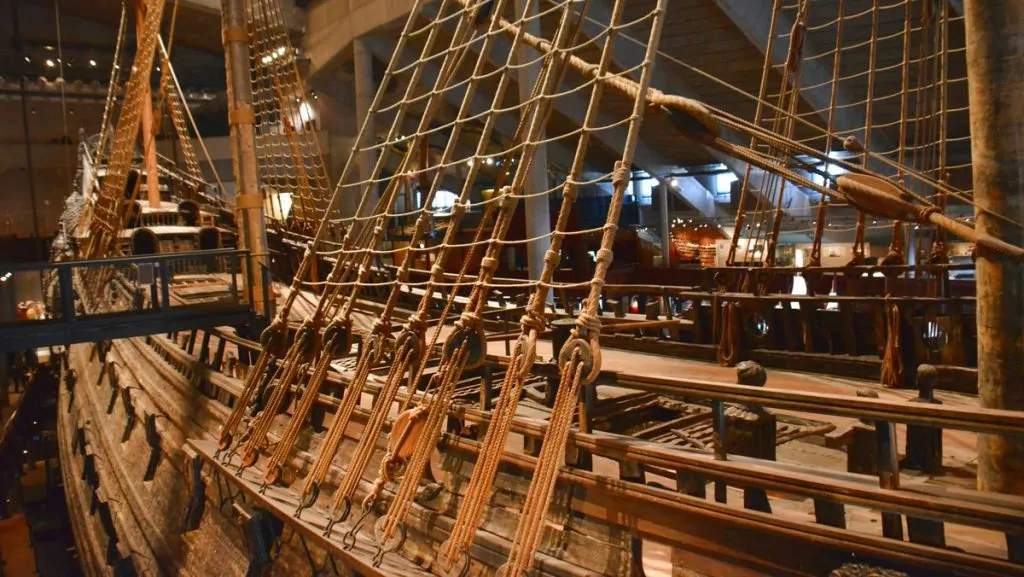
The Vasa ship was launched
Launched in the spring of 1627, the Vasa ship was 69 metres long and more than 50 metres high from the keel to the top of the mainmast. The ship had ten sails, 64 cannons and hundreds of sculptures. Its total weight was around 1200 tonnes.
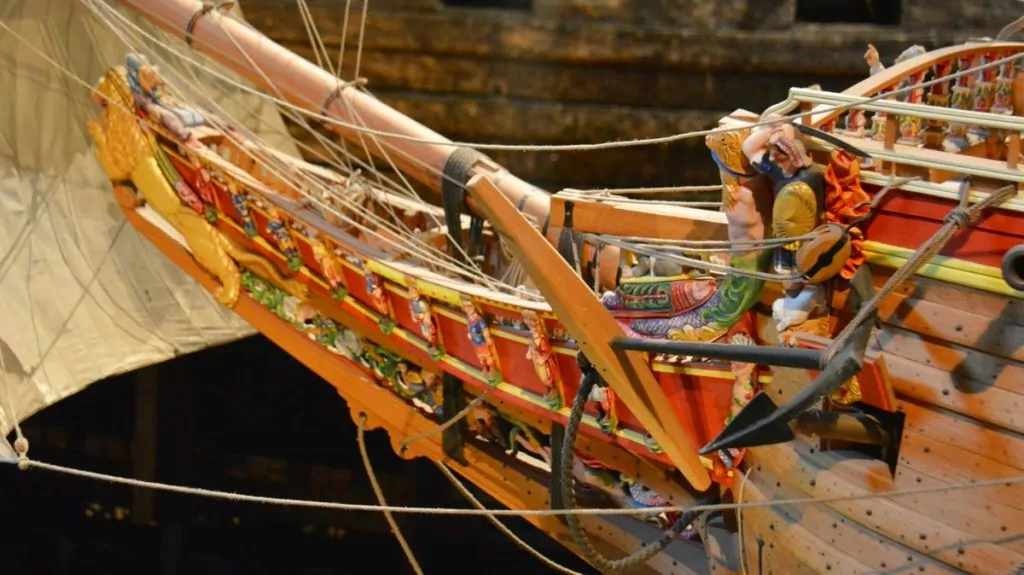
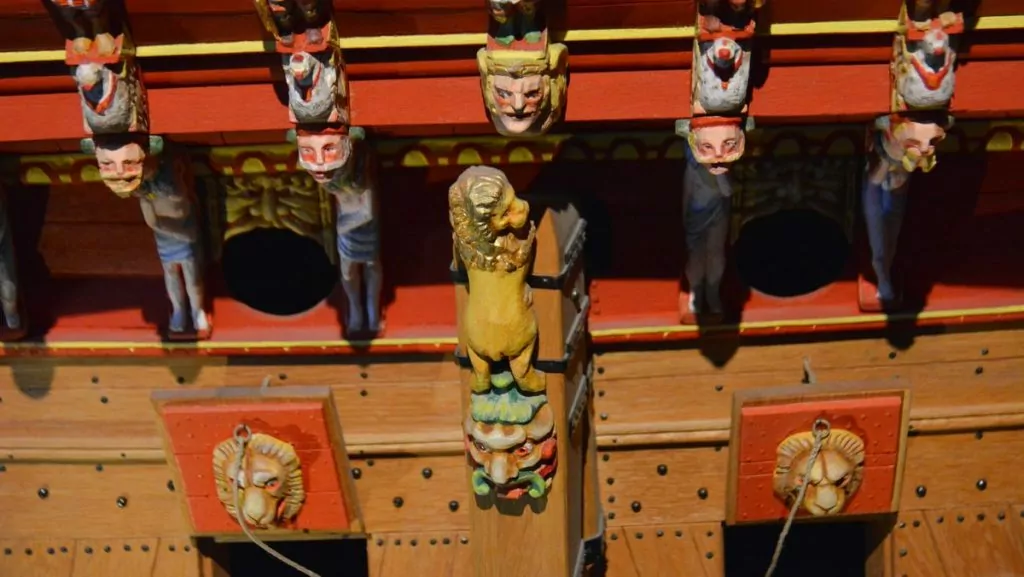
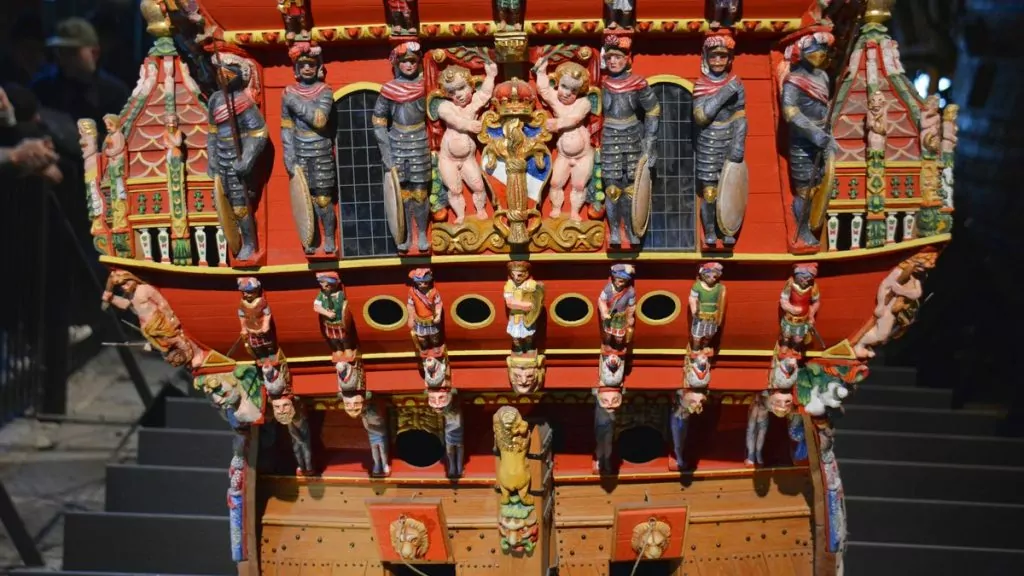
Why did the Vasa ship sink?
In the summer of 1627, the ship underwent several stability tests, which set the alarm bells ringing, but the king wouldn't listen. He wanted his impressive ship to set sail!
The Vasa ship was extremely tall and would have needed a very heavy ballast to be stable. To make room for enough ballast, both cannons and foodstuffs would have had to be left at home, and it was decided to sail away with a lower ballast.
Unfortunately, this turned out to be a wrong decision. When the maiden voyage was made in 1628, the Vasa ship did not make it more than 1300 metres before it sank. Thousands of Stockholmers and foreign ambassadors stood on the quayside. The disaster was a fact.
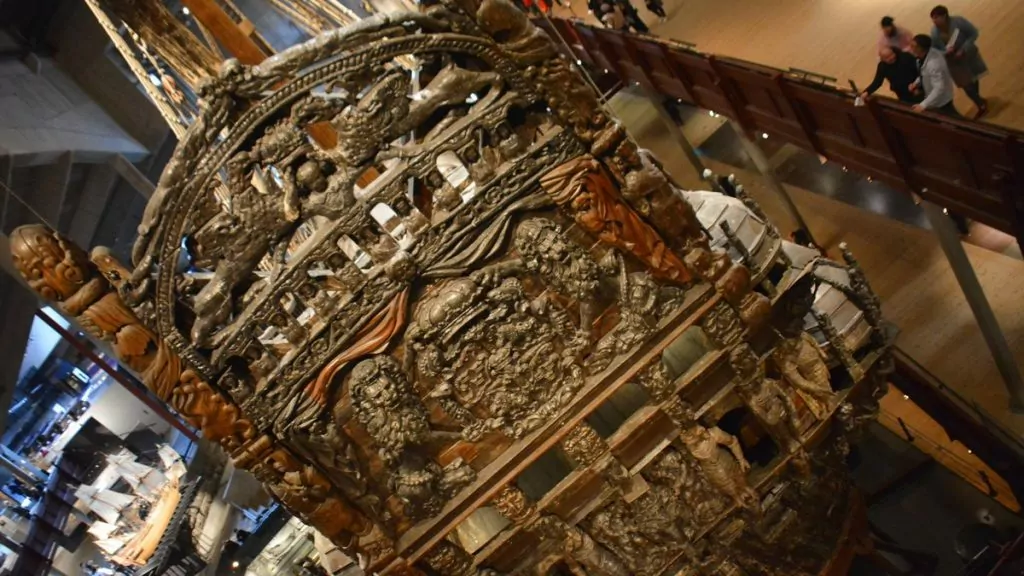
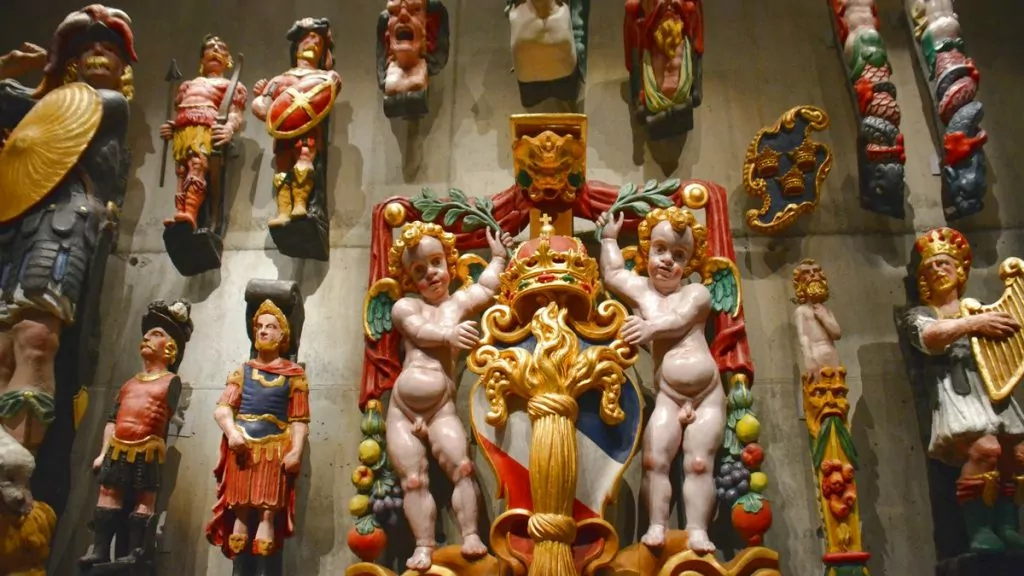
Whose fault was the disaster?
The Swedish king naturally wanted to find a scapegoat for the disaster, but who to blame? The ship's captain, Söfring Hansson, like most others, refused to admit any guilt. Everyone chose to blame the master shipbuilder Henrik Hybertsson, who was practically dead.
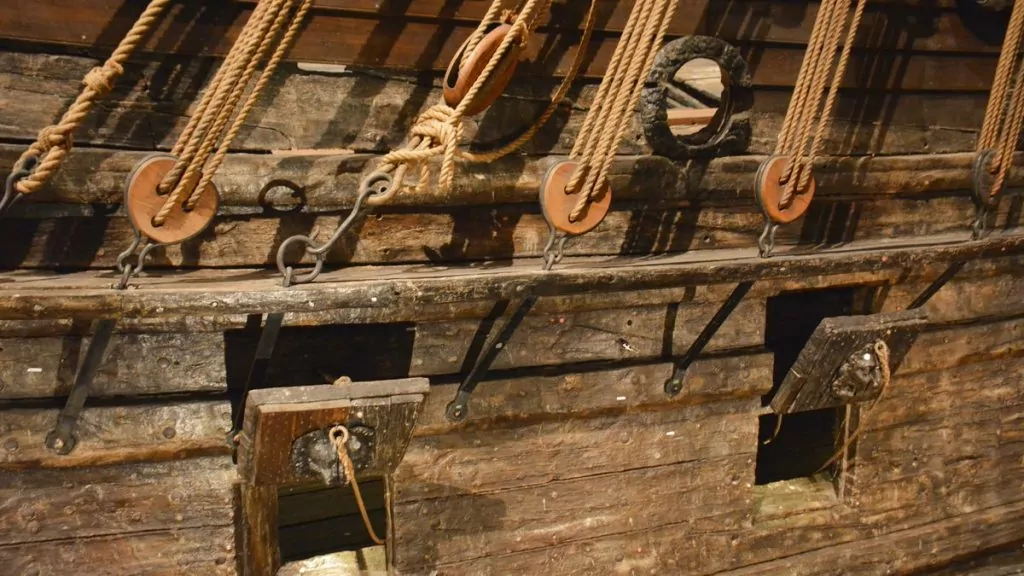
Towing the Vasa ship
Attempts to salvage the Vasa ship were made as early as the 17th century, but were unsuccessful. However, they did manage to pick up several cannons with the help of a diving bell.
The Vasa ship lay at the bottom of the sea for a long time, and it was not until 1956 that marine engineer Anders Franzén finally found the wreck off Beckholmen. The following year, in 1957, work began to salvage the ship. Divers dug cables under the ship and sent steel cables through them. In 1961, the ship was finally lifted and towed to shore.
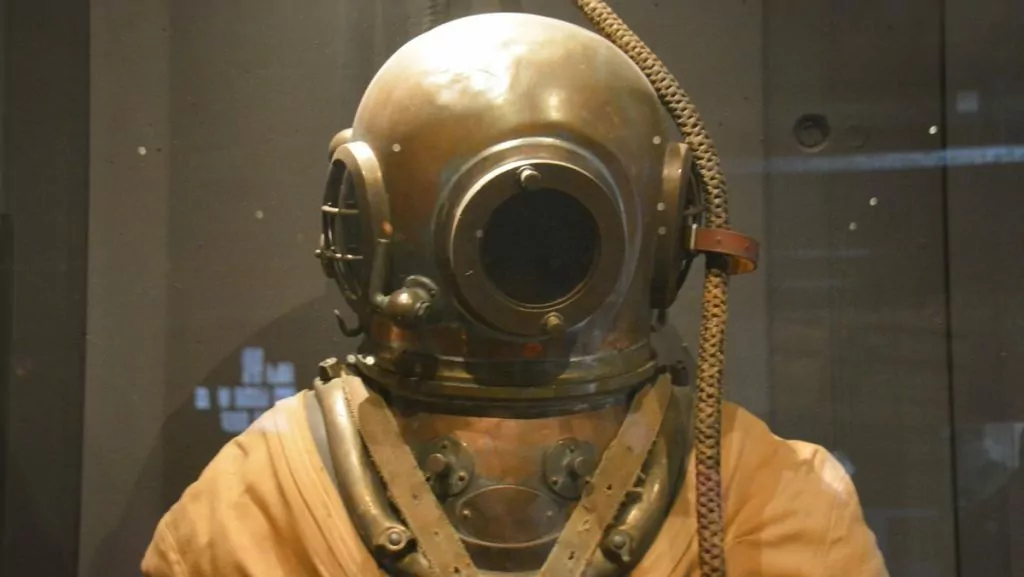
Conservation and preservation
The challenges were not over because the Vasa ship had been brought onto dry land. On the contrary! The hull, which weighed almost 1500 tonnes when wet, was larger than anything that had been preserved before. In addition, more than 40 000 artefacts were found that needed to be taken care of. Many researchers from different disciplines have been involved in preserving the ship for the future.
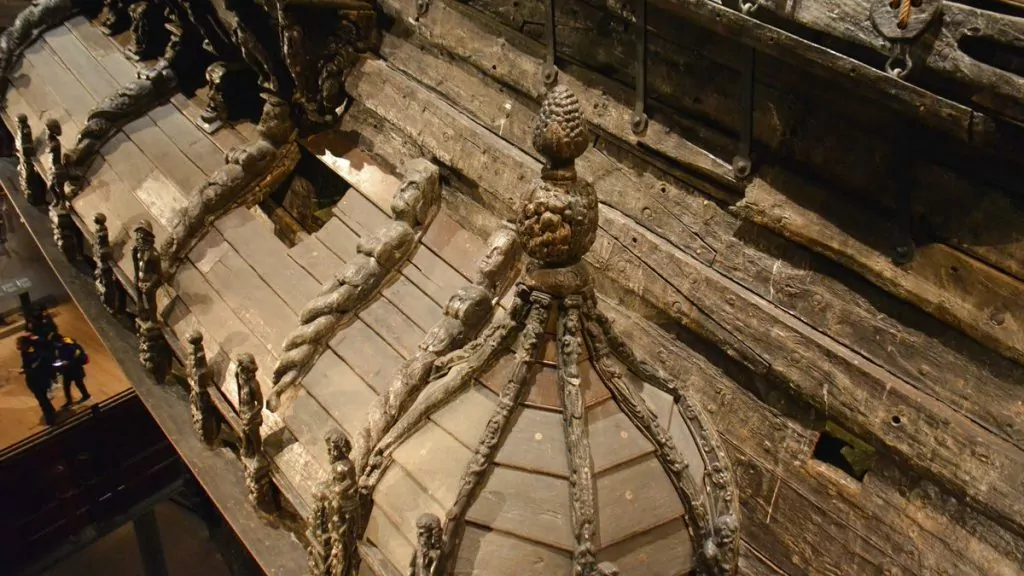
How did crews live in the 17th century?
A visit to the Vasa Museum in Stockholm will also tell you a lot about what life was like as a crew member in the 17th century. For the vast majority, it was of course a hard job, and the men were kept in check with the threat of harsh punishments, such as keelhauling.
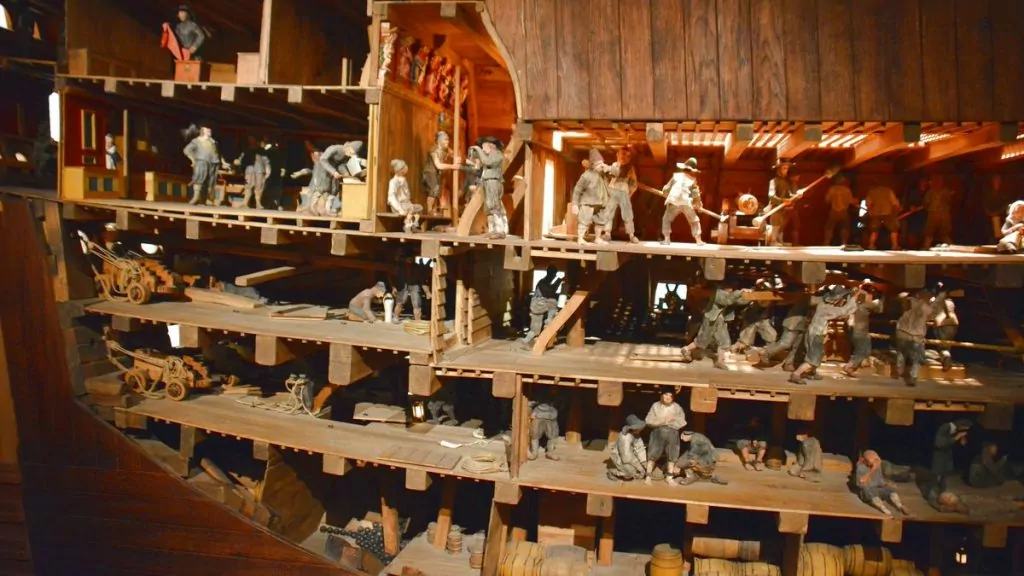
It can't have been easy to manoeuvre these big sailing ships! We remember life on board the sailing ship Gratia, and how tricky it was when shouting about "calm down" or "cockfall". And in comparison, of course the school ship Gratia very small.
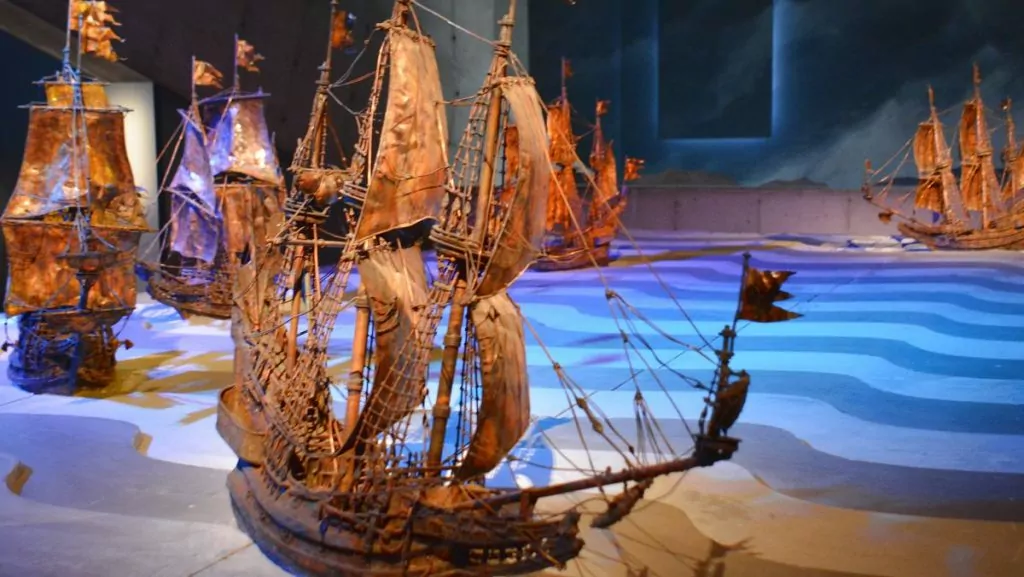
Vitamin deficiency and diseases
The staple food on board ships at this time was peas. The ration for a servant was 3 dl of peas per day, which was enough for one litre of pea soup. Porridge and meat or fish, salted or dried, were also sometimes served. Beer kept better than water and was therefore important on board, but the beer was not so strong that the crew became intoxicated.
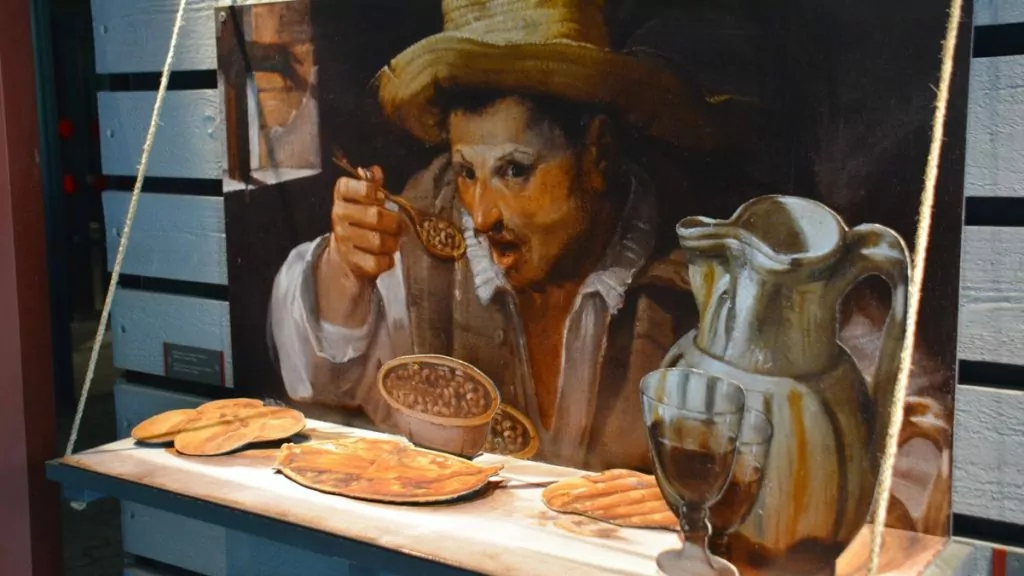
It was common for crews on board ships in the 17th century to fall ill. They suffered from stomach ailments, eye diseases, malaria, scurvy and syphilis. At this time, it was believed that the body consisted of four fluids, and that these had to be in balance.
The four fluids were blood, mucus, yellow bile and black bile. To address the 'imbalance', one could use, for example, bloodletting to drain blood or herbal decoctions to induce sweating or vomiting.
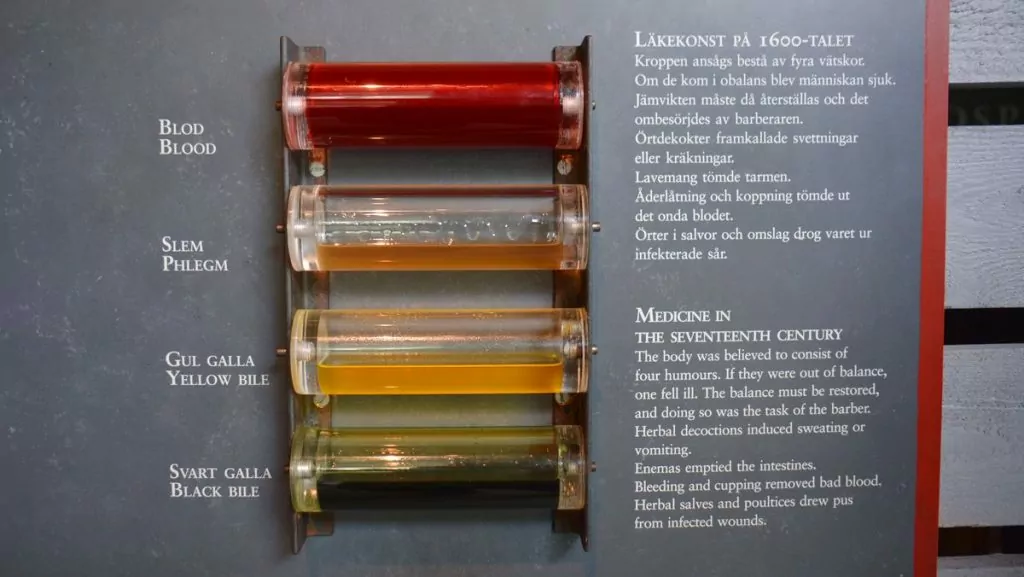
Visiting the Vasa Museum - what to see and do?
Of course, the main reason for visiting the Vasa Museum is to see the impressive Vasa ship. There are also some active things to do, such as trying to steer a ship. There are also various exhibitions, from the role of women to conservation methods.
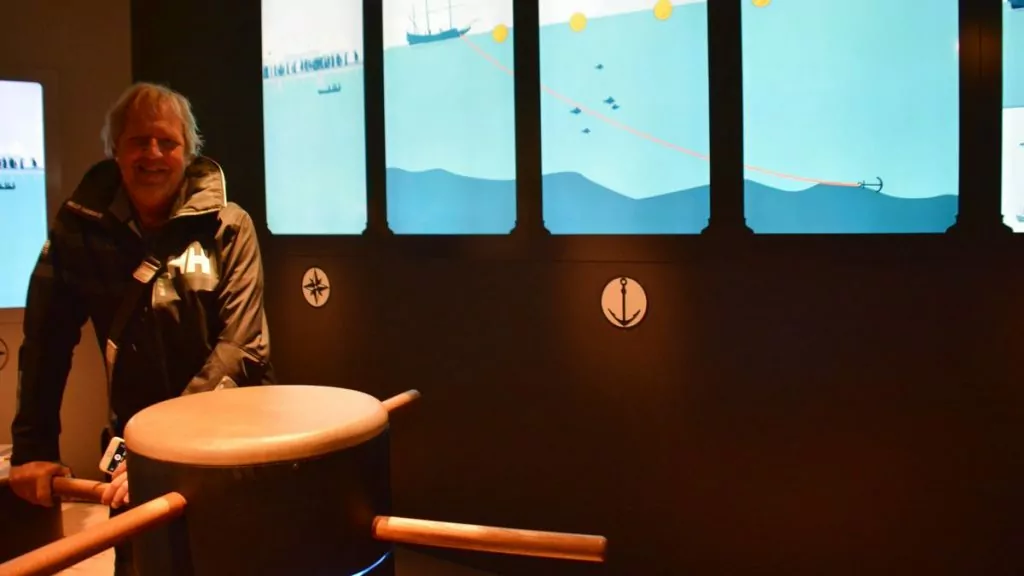
The dream is that they would rebuild the entire Vasa ship in full size as it looked in its original condition - so you could walk around on it. Even though this is missing, we must say that this is a very nice and modern museum and that it is well worth visiting the Vasa Museum!
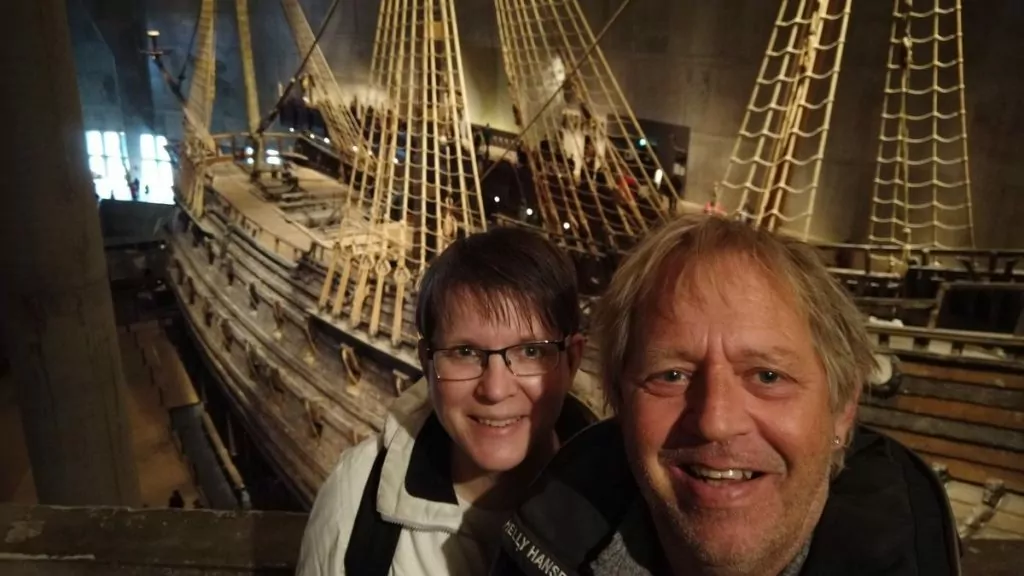
Film from the Vasa Museum
Here is also a short film from our visit to the Vasa Museum, edited by Peter. Have you visited the Vasa Museum in Stockholm? How long has it been since you were last there? What did you think?
Visit the Vasa Museum in Stockholm
- The Vasa Museum on Djurgården: A visit to the Vasa Museum is a pleasant excursion, which can be combined with a stroll around the beautiful city centre. Djurgården. There are also many other museums here, if you want to see more.
- Think about: The Vasa Museum is very popular and can be very crowded, especially during high season and on weekends. In the summer, the premises can be a bit chilly, so an extra jumper can be useful.
Find the Vasa Museum
- Location: The Vasa Museum is located on Djurgården, Galärvarvsvägen 14 in Stockholm.
- Go for a walk: If the weather is fine, it is nice to walk along Strandvägen and across Djurgården Bridge to visit the Vasa Museum. From the T-centre it takes just over half an hour.
- Tramway: Take line 7 towards Djurgården and get off at Nordiska museet/Vasamuseet.
- Bus: You can take line 67 to Nordiska museet/Vasamuseet or line 69 or 76 to Djurgårdsbron.
- Underground railway: The nearest metro station is Karlaplan. From here you can walk (10 minutes) or take bus 67 to the Nordic Museum/Vasa Museum.
- Ferry: The Djurgården ferry runs all year round from Slussen. The ferry M/S Emelie also runs all year round, from Nybroviken and Hammarby Sjöstad and from Masthamnen at the Viking Line terminal.
- Car: There is a car park immediately to the right after Djurgården Bridge, but it can be difficult to find a free space and Djurgårdsvägen is closed to car traffic on certain weekends. However, this does not apply to buses, taxis, mops or vehicles carrying people with disabilities. Parking for people with disabilities is available outside the main entrance.
Guide: Opening hours and prices
- Opening hours: During the low season (1 September - 31 May) the museum is usually open 10-17, and on Wednesdays 10-20. During the high season (1 June - 31 August) the museum is open 8:30-18. Please note that opening hours are subject to change and the museum may be closed on certain days. For current opening hours see the museum's website.
- Prices: Adults pay 150 SEK (2019). Children up to 18 years old enter free of charge. Audio guide and guided tours are included in the entrance fee.
- Service: There is a restaurant with food, coffee and sandwiches. There is also a lunch room. Lockers are available for small bags.
- Accessibility: Parking for people with disabilities is available outside the main entrance.
Accessible toilets are available at the entrance, next to the cloakroom and in the restaurant. Assistance dogs with a certificate are welcome. - Read more: Read more on the Vasa Museum's website.


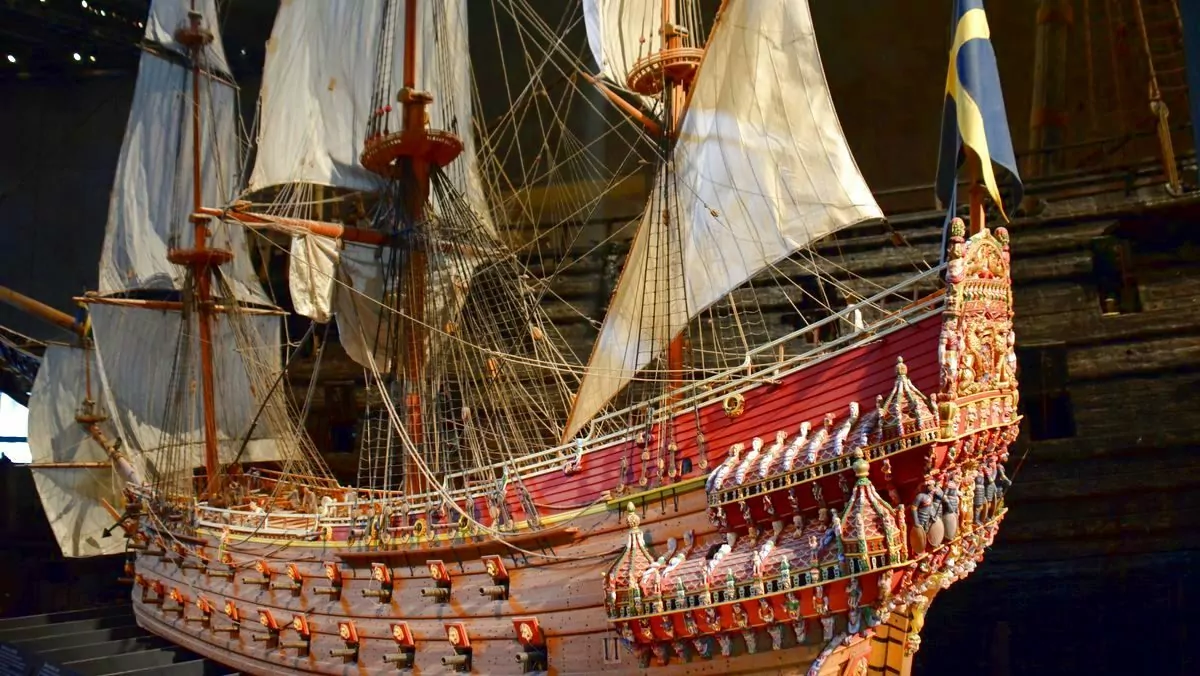






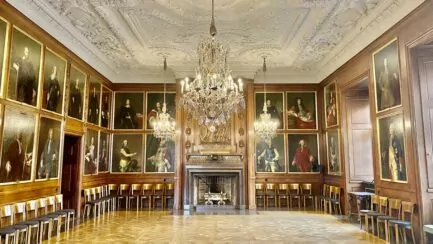


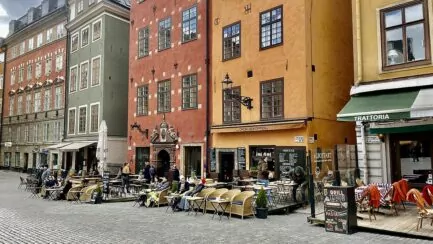

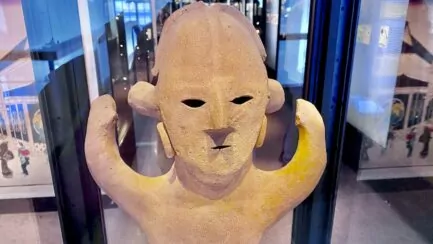



Johnny Friskilä says:
Interesting and instructive. A museum that is something completely unique. Like only one Vasa ship in the whole world!
05 May 2019 - 8:37
Helena says:
Absolutely true! This is a special thing, so no wonder it's popular with tourists!
05 May 2019 - 19:57
Matts Torebring says:
Despite having been there a number of years ago, I find myself wanting to go back again. You reproduce the documentation that exists, so dramatically and with fascinating images, that I feel as if I were there with you.
05 May 2019 - 8:42
Helena says:
Glad you liked our report! 🙂
05 May 2019 - 19:58
Ama de casa says:
The Vasa ship has an interesting history, even if it was rather short at sea (above the surface).
The first time I visited the Vasa Museum was sometime in the 70s. At that time it was a big shed in corrected tin. I have also visited the "new" museum a couple of times, but I don't really remember when it was.
Have a nice Sunday!
05 May 2019 - 9:31
Helena says:
I can imagine it was different in the 70s... 😉 .
05 May 2019 - 19:59
Britt-Marie Lundgren says:
Certainly the Vasa Museum is a nice experience, which you can visit several times. Maybe soon time to make a return visit as it is certainly over 10 years since I was away. Then we were at the Nordic Genetics Meeting at Hasselbacken and one evening we were invited to a mingle and guided tour of the Vasa Museum. Awesome!
Another thing I'll never forget is the comment from a man who photographed his very clean woman in front of the ship; "It's not every day you get two wrecks in the same picture ...." (What happened next I do not know????
05 May 2019 - 11:48
Helena says:
But wow, what a comment ...!!!? Yes, wonder what happened next ...???
05 May 2019 - 19:59
Ditte says:
The Vasa Museum is always worth one or more visits. Have been here many times and have also worked here as a guide - a long time ago.
If you meet people abroad who have been to Stockholm, it is very common that they have just visited the Vasa Museum. I still remember when I was a child and saw Vasa being lifted out of the water.
And Stockholm has many fine museums.
(One of my favourites is always Fotografiska, admittedly of a completely different nature but with fantastic exhibitions).
05 May 2019 - 12:23
Helena says:
But wow, what a thing to have seen the ship lifted out of the water! Awesome!
05 May 2019 - 20:00
Mr Steve says:
A classic that I should, but for some unknown reason have not visited.
05 May 2019 - 17:45
Helena says:
That's how it goes sometimes, that you miss those classics. Hope you felt that you got to go on a tour of the museum anyway! 🙂
05 May 2019 - 20:02
BP says:
If I had not visited the Vasa Museum, I would not have had to do so after your report, which was really, really good.
Have been there three times with guests. The last time I walked around there is at least 15 years ago.
05 May 2019 - 20:16
Helena says:
Thanks, glad to hear you liked our report! 🙂 Perfect place to bring guests to! 🙂
06 May 2019 - 6:31
Lena - good for the soul says:
It's really an exciting and tragic story. Fortunately, the leadership used at that time would not work today!
Hug Lena
06 May 2019 - 6:13
Helena says:
Good reflection! Yes, it's probably fortunate that that particular bit has been developed! Tragic that so much work went to waste! (Although the Vasa ship got its revenge today ;))
06 May 2019 - 6:32